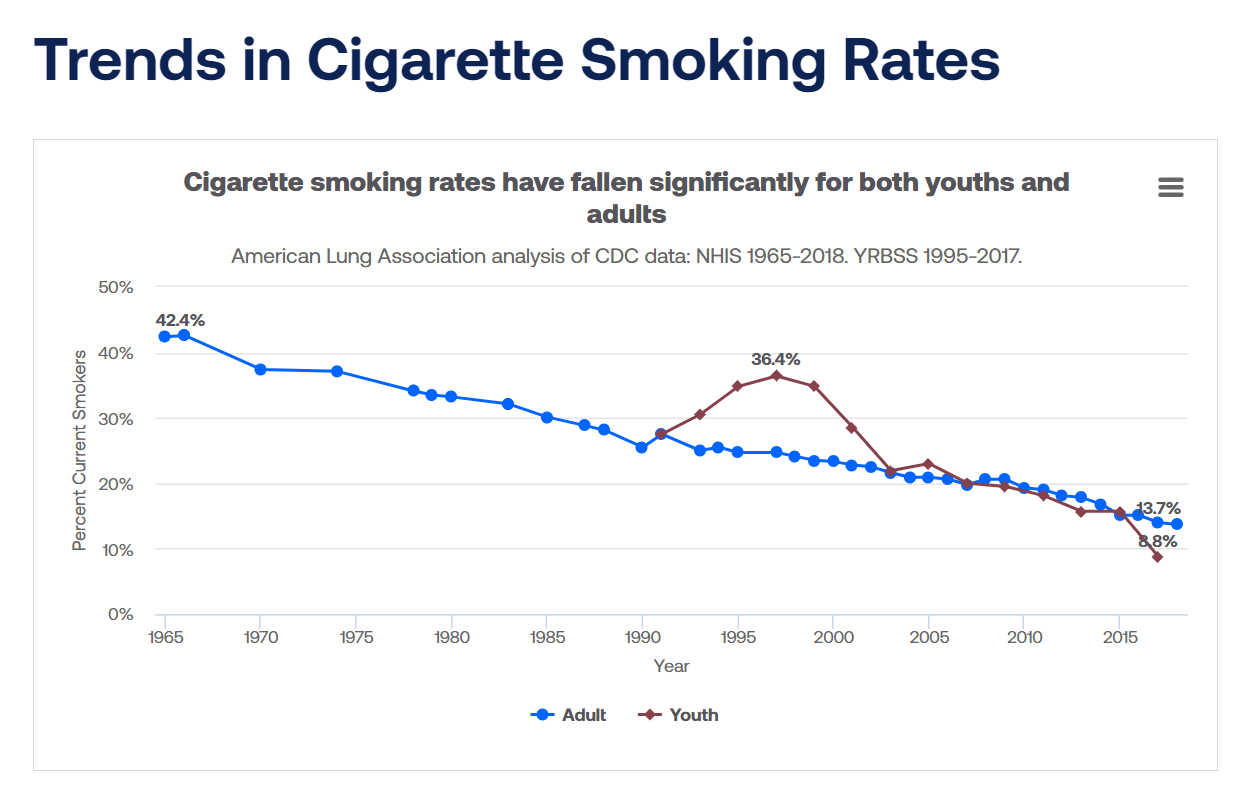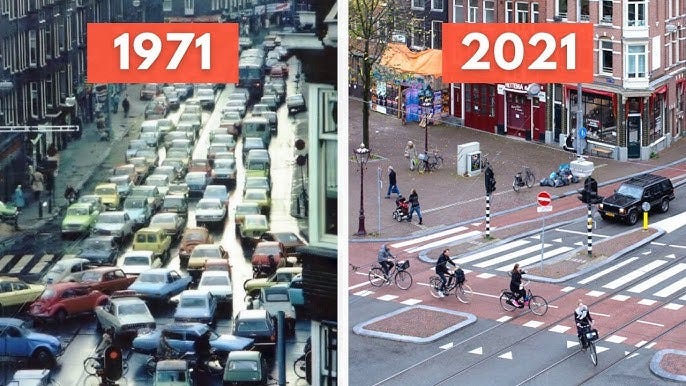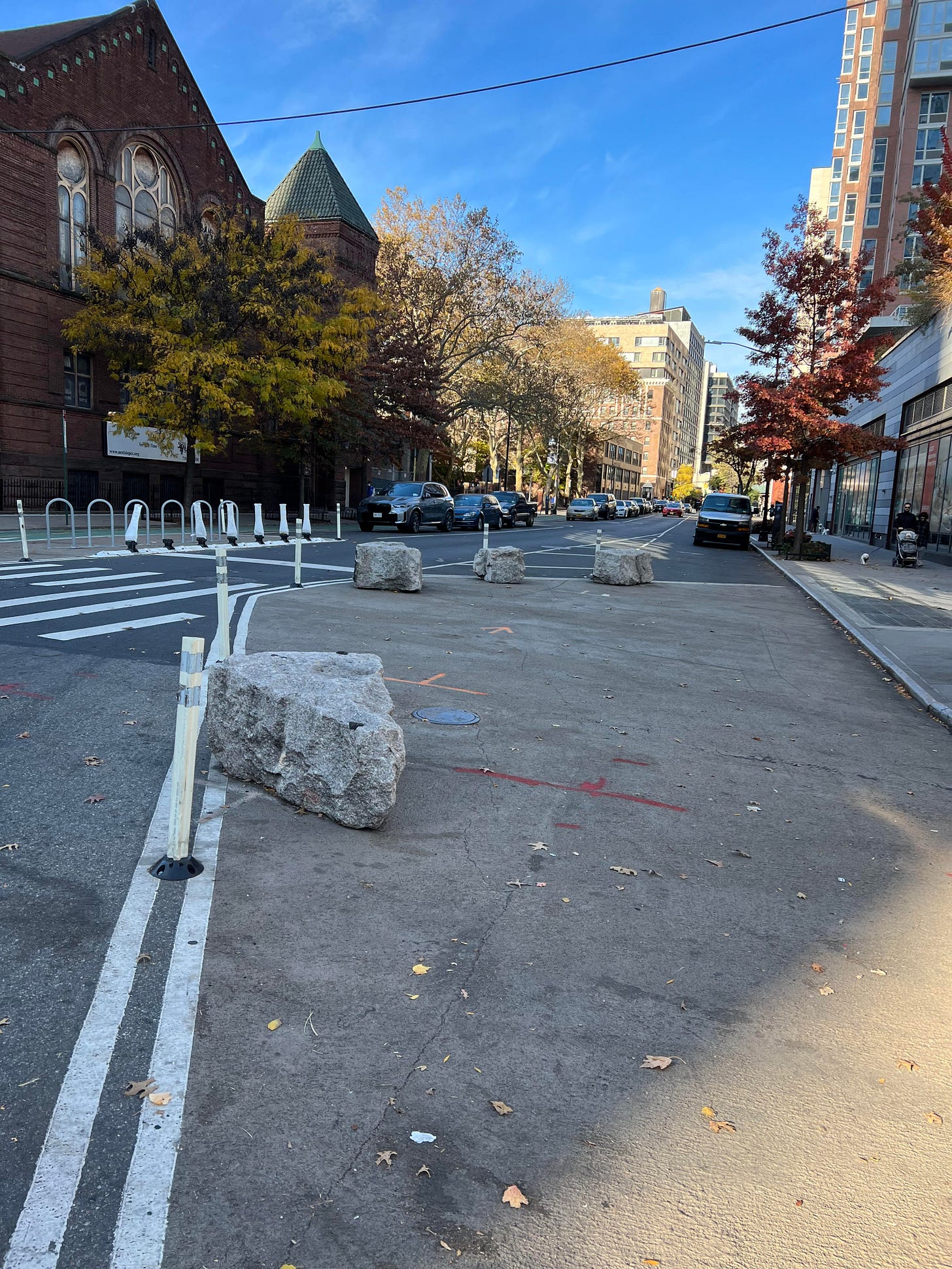Thank you for not driving
Note: I’ve had this post as a draft for months now as I let this blog linger a bit. In a post election cycle reflection period, one that did not see the change that I had hoped for, I thought I would revive not only the blog, but also take a step back to illuminate the scale of the challenge before us, and just how long that change will likely take. It’s not a pessimistic take, because like any of these movements, when you are on the just side, and I for one believe that creating communities that are accessible to everyone and don’t force people into car-dependency is a just one, you efforts will eventually be rewarded, it’s just a matter of how long it will take.
Approximately a decade ago I had the wonderful opportunity to visit my brother and his wife in the quintessentially Midwest town of Pawnee, Indiana….err I mean Kokomo, Indiana. Kokomo is a quaint manufacturing town an hour outside of Indianapolis. It’s neither thriving, nor dying, just kind of existing and doing its thing. (But seriously it was like if Pawnee was a real town)
Not surprisingly, much of living there harkens back to another time in American history, traditional values you might say, a blue collar manufacturing town, prideful in its history and tradition. Like so many traditional things, rooted in times from before included the time honored tradition of allowing smoking in bars and some restaurants, in the year 2014. It was quite the culture shock, to walk into a smoke filled room, the smell so astringent and pervasive, the yellow on the walls and the faded colors of time awash on the decor. Anyone in the year 2023 would now surely sympathize with the pure shock one experiences when entering a smoking establishment and think - the whole country used to be like this??
The first surgeon general’s report on the adverse health effects of smoking was published in 1964, a date now almost 60 years in our collective rear view mirror (car analogy womp womp). Not much changed initially, as the industry fought feverishly to bury the data and convince Americans otherwise. And with a sizable portion of a culture participating in an activity, trying to enact minor change and move the needle was extremely difficult. However as we moved into the 1990s (again, 25 years after the first report), cities began enacting indoor smoking bans, and the % of employees who were protected by smoking bans, and places where indoor smoking was no longer permitted, continued to grow.
The final stamps of this policy took effect in the late 2000s and early 2010s. Milwaukee banned smoking in bars on July 5th 2010, coincidentally and fortunately the same week I moved to the city. Of course proper enforcement and the associated cultural change took another decade, but now in the 2020s I think we can safely say we have truly rooted public smoking in indoor spaces (save for those poor casino workers). Yes smoking remains popular amongst a small segment of users, but that continues to decrease, and their ability to inflict unwanted harm on others has been largely eliminated.
In the War on Cars, I think we’re having our 1964 moment, though in a slightly different fashion. I say this because I’ve been trying to find an appropriate analogy to the urbanism movement, and the fight to root out car dependency in our urban fabric. Activists and advocates have been ringing the bell on the toxic and destructive nature of this type of planning for years now.
But our governments are only now just making the smallest admissions that maybe, just possibly, in the post war development era, we’ve made some mistakes along the way. And this comes as transportation safety reaches a new crisis level, reversing gains that had been made over the previous decades.
To the urbanism movement, this is what America looks like in 2023
When it comes to driving and auto-centric planning, like smoking, I look at it primarily through a lens of public health, but also to a community benefit and resilience standpoint.
Smoking offers short term benefits (nicotine makes one feel good, it occupies your hands, its an experience you can share with others, you look cool!), with a few short term negative correlations (other people have to experience my smoking, its kind of expensive), and some pretty disastrous long term outcomes (uh…cancer/death, and an extreme tax on the healthcare system).
Car-dependent sprawl is no different. Sure, a newly built sprawling community has all the shiny immediate benefits, the freedom to drive wherever you want, and it’s relatively cheap cause it’s just build on a greenfield site, and heavily subsidized by future growth.
Similar to the non-smoking family in the booth next to the smokers, there are some negative impacts to others in the community, namely those who cannot afford to or physically unable to drive, as they have to suffer the consequences of our inaccessible community. But like smokers to non-smokers for decades, drivers and our local leaders (who are always drivers as well), have offered the same advise to non-drivers - “fuck off!”
But longer term, the consequences become much more heavily skewed to the negative. Our sprawling infrastructure starts crumbling and is too expensive to maintain. Our lives becomes increasingly more sedentary and isolated, leading to worse and worse physical and mental health outcomes, and the inequities between drivers and non-drivers continues to grow, as drivers flee to newer developed land with fresh roads to destroy, leaving those who cannot afford to leave holding the bag. Oh and the planet is on fire too but that’s probably totally unrelated.
Urbanism as a movement seeks to highlight these negative outcomes, and sound alarm at the bad laws that allow our “personal freedom” to “be forced to drive everywhere” to send us down a longer term unsustainable path of community development. But it’s still 1964 in urban planning in America (shudders to think about what actual urban planning was like in 1964), and we’re only just now beginning the fight.
The Dutch transformation took 50 years…
But like the anti-smoking movement in America, if we can get the laws on our side, for all the reasons listed above, we can start to really make change. Ending parking minimum requirements is banning smoking in public spaces, that first easy to do shot that starts a chain of reactions towards addressing a public health crisis.
The oft cited example is the Netherlands, a country that was also destroyed by the auto industry (much of it American led), but began a revolt in the 1970s, and has now fundamentally changed the way mobility works in their country.
No the US is not the Netherlands, but there are still real changes we can be making in our communities to make them more accessible and sustainable.
Much like the anti-smoking movement, we can’t start by outright banning cars right here right now. But we can start by making it so that drivers don’t have absolute priority on every block, in every community in this country.
We can build a healthier community if we envision it. I believe it.
Thank you for not driving.
New York can and needs to lead the way to reclaim our streets
Post Script:
And what about vaping? Those are the electric vehicles of our fight - they offer slight improvements over the status quo, but don’t directly address most of the core issues and long term negative outcomes. Vape on Tesla drivers!







